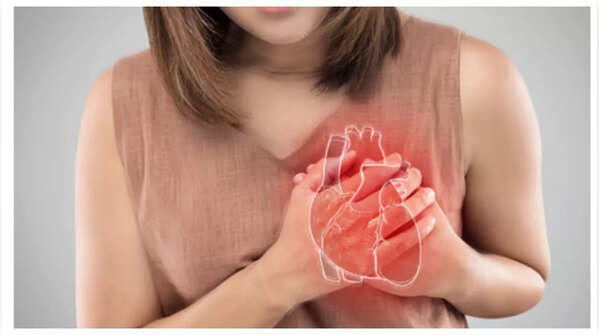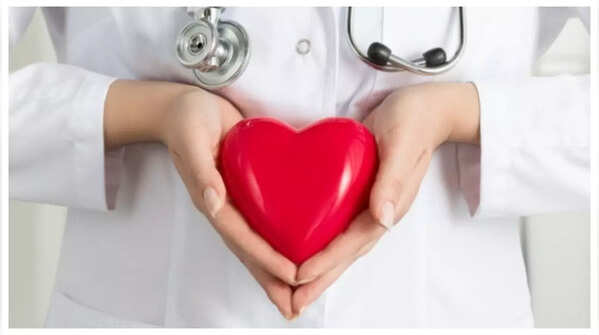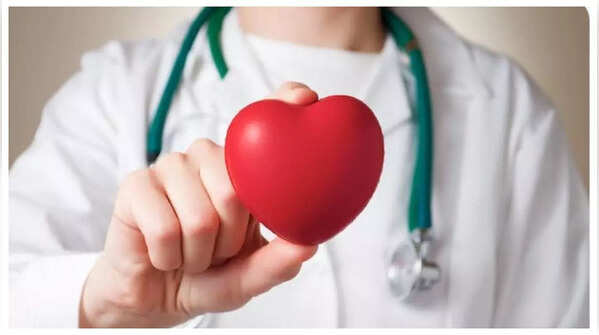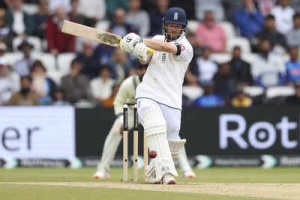The sudden passing of actress Shefali Jariwala, reportedly due to cardiac arrest at the young age of 42, has highlighted the critical importance of heart health and recognizing the warning signs of this life-threatening condition. While regular check-ups are essential for prevention, being aware of the sudden symptoms can be life-saving.

A prominent indicator of sudden cardiac arrest is the abrupt loss of consciousness and collapse. This occurs due to the brain being deprived of oxygen-rich blood. The affected individual becomes unresponsive and fails to react to stimuli. Immediate medical intervention is crucial in such scenarios.

During cardiac arrest, the heart ceases to beat or beats irregularly, hindering its ability to pump blood effectively. Consequently, a pulse becomes undetectable. Breathing may also stop, or the person may exhibit abnormal, gasping breaths known as agonal breathing, which is insufficient for sustaining life. Prompt medical attention is vital. Agonal breathing, characterized by irregular, shallow, or noisy breaths, is a critical sign requiring immediate intervention.

Prior to cardiac arrest, some individuals may experience chest pain, pressure, or discomfort. These symptoms can be accompanied by shortness of breath, nausea, or lightheadedness. These signs may indicate that the heart is under stress and could precede sudden cardiac arrest.

Before the heart ceases to function, abnormal heart rhythms (arrhythmias) such as ventricular fibrillation can trigger a rapid, fluttering, or pounding heartbeat. This irregular rhythm impairs the heart's ability to pump blood, potentially leading to sudden cardiac arrest.

In some instances, individuals may experience weakness, dizziness, or shortness of breath shortly before collapsing. These symptoms serve as warning signs indicating that the heart is not functioning correctly and necessitate immediate medical evaluation.

While both constitute heart emergencies, heart attack and cardiac arrest differ significantly. A heart attack occurs when blood flow to a portion of the heart muscle is obstructed, typically due to a clot or narrowing in the coronary arteries. This blockage deprives the heart tissue of oxygen-rich blood, leading to damage or death in the affected area. During a heart attack, the heart typically continues to beat, although the individual may experience chest pain, shortness of breath, nausea, or sweating.
In contrast, sudden cardiac arrest is an electrical problem where the heart abruptly stops beating effectively due to an abnormal heart rhythm, disrupting blood flow to the brain and other vital organs. This results in immediate loss of consciousness, absence of a pulse, and cessation of breathing. Cardiac arrest can occur without warning and is often fatal within minutes, as tragically seen in Shefali Jariwala's case.
Newer articles
Older articles
 The 'Good Cop, Bad Cop' Parenting Strategy: Does It Do More Harm Than Good?
The 'Good Cop, Bad Cop' Parenting Strategy: Does It Do More Harm Than Good?
 5 Natural Ways to Strengthen Your Heart and Reduce Disease Risk
5 Natural Ways to Strengthen Your Heart and Reduce Disease Risk
 Broadside: Broad Slams India's Team Choices After Headingley Test, Calls for Edgbaston XI Changes
Broadside: Broad Slams India's Team Choices After Headingley Test, Calls for Edgbaston XI Changes
 Wimbledon Serves Up India: Tennis Giant Courts Cricket-Crazy Nation for Growth
Wimbledon Serves Up India: Tennis Giant Courts Cricket-Crazy Nation for Growth
 England's Ben Duckett: The New Virender Sehwag? Former Coach Draws Bold Comparison
England's Ben Duckett: The New Virender Sehwag? Former Coach Draws Bold Comparison
 Archer Set for England Return? Broad and Buttler Advocate for Pacer's Second Test Inclusion
Archer Set for England Return? Broad and Buttler Advocate for Pacer's Second Test Inclusion
 Ashada Gupt Navratri 2025: Unveiling Dates, Timings, and Esoteric Significance
Ashada Gupt Navratri 2025: Unveiling Dates, Timings, and Esoteric Significance
 Suryakumar Yadav's Sports Hernia Surgery: What It Is, Who's at Risk, and Path to Recovery
Suryakumar Yadav's Sports Hernia Surgery: What It Is, Who's at Risk, and Path to Recovery
 The Evil Eye: Protective Charm or Portal to Darkness? Exploring the Symbol's Dual Interpretations
The Evil Eye: Protective Charm or Portal to Darkness? Exploring the Symbol's Dual Interpretations
 Jaiswal Eyes Gavaskar's 49-Year Record: India's Opener Nears Milestone 2,000 Test Runs in Edgbaston Clash
Jaiswal Eyes Gavaskar's 49-Year Record: India's Opener Nears Milestone 2,000 Test Runs in Edgbaston Clash